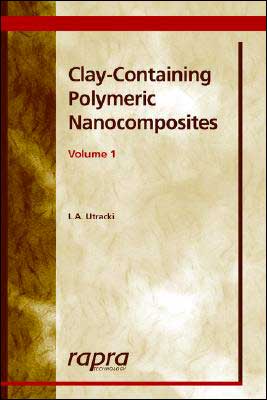Glass: Mechanics and Technology
This is the first book to discuss the correlation between the performance of industrial processes and practice-relevant properties, such as strength and optical properties. Interdisciplinary in his approach, the author discusses both the science and technology, starting with glass past and present, its structure, and rheology. The sections on properties include mechanical strength and contact resistance, ageing, mechanics of glass processes, the production and control of residual stresses,...
Search in google:
This is the first book to discuss the correlation between the performance of industrial processes and practice-relevant properties, such as strength and optical properties. Interdisciplinary in his approach, the author discusses both the science and technology, starting with glass past and present, its structure, and rheology.The sections on properties include mechanical strength and contact resistance, ageing, mechanics of glass processes, the production and control of residual stresses, high-tech products and current research and development. Applications covered include glazing, packaging, optical glass, glass fibers for reinforcement, and abrasive tools.
Foreword. Preface. Symbols and Definitions (units in parentheses). Physical Constants. Abbreviations. 1. Introduction. 2. Glass, A Ceramic Material. 2.1 Four Classes of Materials. 2.2 Materials Properties. 2.3 Selecting Materials. 2.4 Performance Indices. 2.5 Shape Factors in Mechanical Design. 3. Glass Prehistory and History. 3.1 Natural Glasses. 3.2 Early Glasses. 3.3 First Optical Glasses. 3.4 Modern Glasses. 4. Applications of Glass. 4.1 Glazing. 4.2 Containers. 4.3 Optical Glass. 4.4 Glass Fibres for Insulation and Reinforcement. 4.5 Abrasive Tools. 4.6 Glass Manufacturers. 5. Glass Structure. 5.1 Introduction. 5.2 Silica Glass and Related Glasses. 5.3 Borate Glass and Related Glasses. 5.4 Organic and Chalcogenide Glasses. 5.5 Metallic Glasses. 5.6 Avoiding Crystallization. 5.7 Vitroceramic Fabrication. 5.8 Glass Surface. 6. Glass Rheology. 6.1 Viscosity. 6.2 Glass Transition and Its Observation. 6.3 Viscous Response of Glass. 6.4 Viscoelastic Response of Glass. 6.5 Tempering of Glass. 6.6 Transient Stresses. 6.7 Chemical Tempering of Glass. 7. Mechanical Strength of Glass. 7.1 Theoretical Strength. 7.2 Tensile Resistance of Glass. 7.3 Stress Concentration and Griffith Energy Balance. 7.4 Linear Elasticity Crack Tip Stress Field. 7.5 SIF under Non-uniform Stress. 7.6 Toughness Measurement. 7.7 Influence of Residual Stress on Strength and Fragmentation. 7.8 Statistical Weibull Analysis. 8. Contact Resistance of Glass. 8.1 Sharp and Blunt Contact. 8.2 Sharp Contact Resistance. 8.3 Scratch Resistance. 8.4 Abrasion Resistance. 8.5 Cutting and Drilling of Glass. 9. Ageing of Glass. 9.1 Fatigue in Glass. 9.2 Stress Corrosion. 9.3 Charles and Hilling Theory. 9.4 Lifetime Under Static Fatigue. 9.5 Applications. 9.6 NiS Phase Transformation. 9.7 Crack Healing. 10. Mechanics of Glass Processes. 10.1 Introduction. 10.2 Float Process. 10.3 Fusion Draw. 10.4 Container Process. 10.5 Fibre Process. 11. Production Control of Residual Stresses. 11.1 Introduction. 11.2 Residual Stresses in Flat Glass. 11.3 Basic of Photoelasticity in Flat Glass. 11.4 Stress Meters. 12. High-tech Products and R&D. 12.1 Market Trend-Driven R&D. 12.2 Flat Display Panels. 12.3 Thin-Film Technology. 12.4 Residual Stresses in Thin Films. 12.5 Applications of Coatings and Summary. 13. Conclusion. Appendix 1: Light Absorption, Dispersion and Polarization. A1.1 Electromagnetic Spectrum. A1.2 Light Absorption. A1.3 Light Dispersion. A1.4 Light Polarization. Appendix 2: Atomic Structure and Bond Formation. A2.1 Atomic Structure. A2.2 Mendeleev Table. A2.3 Bond Formation. Appendix 3: Thermal Expansion and Elasticity. A3.1 The ??-E Trend. A3.2 Qualitative Approach. A3.3 Expansion Modelling. A3.4 Differential Expansion Measurement. Appendix 4: Falling Sphere Viscometer and Fining of Glass. A4.1 Falling Sphere. A4.2 Fining of Glass. Appendix 5: Theoretical Strength of a Solid. Appendix 6: Weibull Analysis. Appendix 7: Photoelastic Set-Up for Lectures. A7.1 Set-Up for Photoeleastic Projection. A7.2 Example of a Beam under Flexion (Transient Stresses). A7.3 Example of Tempered Specimens (Residual Stresses). Appendix 8: Instrumented Nanoindentation Applied to Thin Films. A8.1 Instrumented Nanoindentation. A8.2 Indentation Strain Field. A8.3 Hardness, Yield Stress and Representative Flow Stress. A8.4 Coating-Substrate Composite Response. A8.5 Time-Dependent Response. A8.6 Elastic-Plastic Ratios. Appendix 9: Strain and Stress. A9.1 Stress and Strain. A9.2 Stress and Strain Tensors. A9.3 Uniaxial Tensile Test. A9.4 Simple Shear. A9.5 Plane Stress. A9.6 Hydrostatic Pressure and Stress Deviator. A9.7 Generalized Hooke???s Law. A9.8 Kelvin and Maxwell Models. A9.9 Generalized Maxwell Models. Appendix 10: Flow and Plasticity in Glass. A10.1 Introduction. A10.2 From Newtonian to Non-Newtonian Flow. A10.3 From Homogeneous to Heterogenerous Flow. Appendix 11: Finite Element Analysis. A11.1 FEM of the Pressing of a Parison. A11.2 FEM of the Precision Moulding of a Glass Lens. A11.3 FEM of Fracture. A11.4 FEM of Fracture. Appendix 12: X-Ray Diffraction Analysis of Thin-Film Residual Stresses. A12.1 Thin-Film Stress and Strain. A12.2 X-Ray Diffraction Method. A12.3 The ??-sin2?? Method. Appendix 13: Diffusion. A13.1 Diffusion Laws. A13.2 Steady-State Diffusion. A13.3 Non-steady-State Diffusion. Glossary. References. Index.








